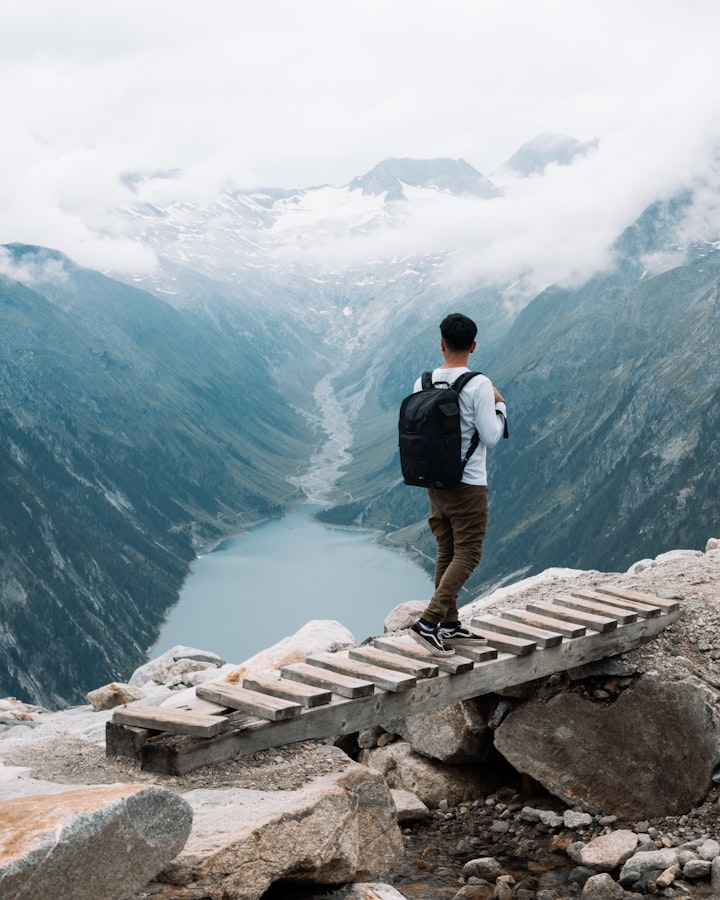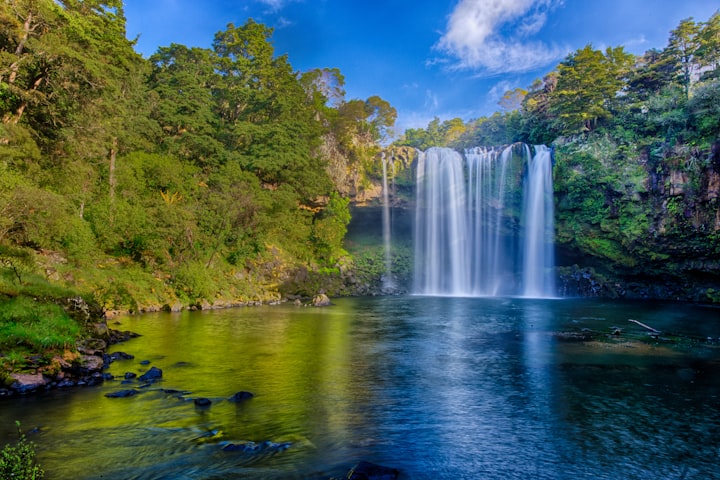Top 10 Destinations for Adventure Travel
adventure

Patagonia, Chile and Argentina:
Patagonia is a vast, remote region located in the southern end of South America, shared by Chile and Argentina. It is known for its rugged, natural beauty and is a popular destination for adventure travel. Activities in Patagonia include trekking and hiking, rock climbing, mountaineering, horseback riding, fishing, and wildlife watching. Visitors can explore the Torres del Paine National Park in Chile, which is home to glaciers, mountains, and a diversity of wildlife, such as guanacos, foxes, and Andean condors. In Argentina, the Los Glaciares National Park, is also a must see, with its stunning glaciers, including the famous Perito Moreno glacier, as well as the peaks of the Cerro Torre and Fitz Roy mountain ranges. Other highlights of Patagonia include the Cueva de las Manos, a UNESCO World Heritage site with ancient rock art, and the Perito Moreno Glacier, one of the few glaciers in the world that is still advancing. Patagonia is also a great destination for outdoor enthusiasts, with opportunities for skiing, snowboarding, and snowshoeing in the winter months.
Everest Base Camp, Nepal:
Everest Base Camp in Nepal is the starting point for climbers attempting to summit Mount Everest, the highest peak in the world. The base camp is located at an altitude of 5,364 meters (17,598 feet) and is accessible by a trek that takes about 10-12 days. The trek to Everest Base Camp is considered one of the most challenging and rewarding in the world, offering spectacular views of the Himalayan mountain range, including Mount Everest, as well as the opportunity to experience the unique culture and way of life of the Sherpa people.
The trek starts from Lukla, a small town with an airport in the Khumbu region, the trekkers will pass through several villages and interact with the local sherpa communities, which is an integral part of the trek. Along the way, trekkers will also have the opportunity to visit the famous Tengboche Monastery, which is one of the largest in the Khumbu region and offers stunning views of the surrounding mountains. The trek is physically demanding and requires a good level of fitness and acclimatization, but the views and experiences along the way are well worth the effort.
It is important to note that the trekking season for Everest Base Camp is from October to November and from March to May, and trekkers should be prepared for cold temperatures, high altitude and unpredictable weather conditions.
Additionally, it is important to choose a reputable trekking company and be aware of the risks and necessary precautions for high altitude trekking.
The Amazon Rainforest, South America:
The Amazon Rainforest is a vast tropical rainforest located in South America, primarily in Brazil, but also extending into Peru, Colombia, Ecuador, and other countries. It is the largest rainforest in the world and is home to an incredibly diverse array of plant and animal life, as well as indigenous communities. The Amazon Rainforest is a popular destination for adventure travel, with activities such as jungle trekking, wildlife watching, river rafting, and camping.
Visitors to the Amazon can explore the rainforest on foot, by boat, or by canoe, and can expect to see a wide variety of wildlife, such as monkeys, jaguars, pink dolphins, and anacondas. The Amazon is also home to a wide variety of birds, including the scarlet macaw, and many insects and butterflies.
One of the most popular ways to explore the Amazon is by taking a river cruise. These cruises typically last between 3-7 days and offer the opportunity to explore the rainforest, visit indigenous communities, and see wildlife up close. Visitors can also stay in eco-lodges, which are designed to minimize impact on the environment and offer an authentic Amazonian experience.
It's important to note that the Amazon Rainforest is a delicate ecosystem and that travelers should be mindful of their impact and only use responsible tour operators who follow sustainable practices. Additionally, the best time to visit the Amazon is during the dry season, which typically runs from June to September, as the weather is more stable and the water levels are lower, making it easier to navigate the rivers and spot wildlife.
The Inca Trail, Peru:
The Inca Trail is a famous trek in Peru that leads to Machu Picchu, the ancient Incan citadel. The trail is approximately 42 km (26 miles) long and takes 4 days to complete, starting and ending in the city of Cusco. The trail passes through a variety of landscapes, including cloud forest, high Andean mountains, and subtropical jungle, and offers spectacular views of the surrounding mountains, including the iconic peak of Wayna Picchu. Along the way, trekkers will also pass several ancient Incan ruins and sites, such as the Incan city of Llactapata, and the impressive Incan ruins of Runkurakay, Sayacmarca, Phuyupatamarca, and Wiñay Wayna.
The Inca Trail is a physically demanding trek, and trekkers should be in good physical shape and acclimatized to the altitude before attempting the trail. It's also important to note that the trail is closed for maintenance in February, and permit are required to hike the Inca trail, which have to be booked well in advance, as the number of permits issued is limited daily.
Additionally, it is also recommended to hire a reputable guide service for the trek as they will provide knowledgeable guides, porters and cooks, and ensure that the trek is safe and comfortable.
The Inca Trail is one of the most popular treks in the world, and for good reason. The combination of spectacular scenery, ancient history, and the opportunity to visit Machu Picchu, one of the most iconic and mysterious ancient sites in the world, make it a truly unforgettable experience.
The Arctic, Norway and Canada:
The Arctic is a remote and inhospitable region located in the far north of the Earth, covering parts of Norway, Canada, and other countries. It is known for its harsh, cold climate and its unique and fragile ecosystem. The Arctic is a popular destination for adventure travel, with activities such as dog sledding, ice fishing, snowmobiling, and wildlife watching.
Visitors to the Arctic can experience the awe-inspiring beauty of the polar landscapes, including the northern lights, glaciers, and fjords. In Norway, the Arctic archipelago of Svalbard, is a must-see destination for its glaciers, mountains, and polar bears. In Canada, the Arctic regions of Nunavut and the Northwest Territories are also popular for their natural beauty and abundant wildlife, including polar bears, caribou, and arctic foxes.
The Arctic is also home to a number of indigenous communities, such as the Inuit in Canada and the Sami people in Norway, who have lived in the region for thousands of years and have developed a unique culture and way of life adapted to the harsh Arctic conditions. Visitors can learn about the traditional way of life of these communities and experience their culture through activities such as dog sledding and ice fishing.
It is important to note that the Arctic is a fragile ecosystem, and travelers should be mindful of their impact and only use responsible tour operators who follow sustainable practices. Additionally, the Arctic is a challenging environment, with extreme temperatures and unpredictable weather, so travelers should be well-prepared and equipped for the conditions.
Also, it's important to check the best time to visit the Arctic, as the summer months are the warmest, and the best time for wildlife viewing and outdoor activities, but also the most crowded.
The Kalalau Trail, Hawaii:
The Kalalau Trail is a well-known and beautiful hiking trail located on the island of Kauai, Hawaii. The trail is approximately 11 miles long and takes 2-3 days to complete, starting at the Ke'e Beach and ending at the Kalalau Beach. The trail is considered to be one of the most challenging and rewarding in Hawaii, offering spectacular views of the Napali Coast, including sea cliffs, waterfalls, and beaches. Along the way, hikers will also pass through a variety of landscapes, including lush tropical forests, and have the opportunity to experience the unique culture and way of life of the Hawaiian people.
The Kalalau Trail is a strenuous hike and hikers should be in good physical shape and well-prepared for the conditions, including steep and rocky terrain and uneven footing, as well as hot and humid weather. It's also important to note that hikers should be aware of the hazards, such as flash floods and falling rocks, and hikers should be aware of the weather forecast and plan accordingly.
A permit is required to hike the trail, and the number of permits issued is limited daily, so hikers should plan well in advance and book their permits early. Additionally, hikers should be aware that there are no facilities along the trail, such as bathrooms or potable water, so hikers should come prepared with their own food, water, and camping gear.
The Okavango Delta, Botswana:
The Okavango Delta is a unique and fragile ecosystem located in the northern part of Botswana. It is a vast, wetland area that is home to an incredible variety of plant and animal life, including elephants, lions, hippos, crocodiles, and over 400 species of birds. The Okavango Delta is a popular destination for adventure travel, with activities such as wildlife safaris, canoeing, and boat trips.
Visitors to the Okavango Delta can explore the area on foot, by boat, or by mokoro, a traditional dugout canoe. They can expect to see a wide variety of wildlife, including elephants, lions, hippos, crocodiles, and an incredible variety of birds, such as the African fish eagle and the sacred ibis. Visitors can also visit the Moremi Game Reserve, which is located in the heart of the delta and offers excellent wildlife viewing.
The Okavango Delta is also home to a number of indigenous communities, such as the Bayei and Basarwa people, who have lived in the area for centuries and have developed a unique culture and way of life adapted to the delta's environment. Visitors can learn about the traditional way of life of these communities and experience their culture through activities such as visiting a local village.
It's important to note that the Okavango Delta is a delicate ecosystem, and travelers should be mindful of their impact and only use responsible tour operators who follow sustainable practices. Additionally, the best time to visit the Ok
The Haute Route, France and Switzerland:
The Haute Route is a classic high-altitude trek that takes hikers through the French and Swiss Alps, starting in Chamonix, France, and ending in Zermatt, Switzerland. The trek is approximately 180 km (110 miles) long and takes around 11-14 days to complete. The Haute Route offers spectacular views of some of the most famous peaks in the Alps, such as Mont Blanc, the Matterhorn and the Grand Combin, and passes through a variety of landscapes, including glaciers, high-altitude passes, and alpine meadows.
The Haute Route is a challenging trek and hikers should be in good physical shape and well-prepared for the conditions, including steep and rocky terrain and uneven footing, as well as cold and unpredictable weather. It's also important to note that hikers should be aware of the hazards, such as crevasses and rockfall, and hikers should be aware of the weather forecast and plan accordingly.
Hikers should also be prepared for the high altitude, as the highest point of the trek is the Col des Grandes Jorasses at 3,735m (12,271ft) and the trail can be challenging for those who are not acclimated to high altitude. Additionally, hikers should come prepared with the proper gear, such as a good hiking boots, warm clothing, and equipment to cross glaciers.
A permit is not required to hike the trail, but hikers should be aware that some of the huts along the route require booking in advance, especially during the peak season. Also, hikers should be aware that the best time to hike the Haute Route is during the summer months, from June to September, when the weather is more stable and the snow has melted.
The Great Barrier Reef, Australia:
The Great Barrier Reef is a vast coral reef system located off the coast of Queensland, Australia. It is the largest coral reef system in the world and is home to an incredible diversity of marine life, including over 1,500 species of fish, 600 species of coral, and 4,000 species of mollusk. The Great Barrier Reef is a popular destination for adventure travel, with activities such as scuba diving, snorkeling, and sailing.
Visitors to the Great Barrier Reef can explore the reef by boat, either on a day trip or on a liveaboard, which allows for multiple dives and a more in-depth experience. They can expect to see a wide variety of marine life, including colorful coral, tropical fish, turtles, and even sharks and whales. Visitors can also take a helicopter or seaplane tour to see the reef from above and appreciate its scale and beauty.
The Great Barrier Reef is also home to a number of research stations and eco-tourism operators that offer educational and conservation-minded tours, where visitors can learn about the coral reef ecosystem and the conservation efforts to protect it.
It's important to note that the Great Barrier Reef is facing significant threats, such as climate change, pollution, and overfishing, and travelers should be mindful of their impact and only use responsible tour operators who follow sustainable practices. Additionally, the best time to visit the Great Barrier Reef is during the summer months, from June to October, when the weather is warm and the water is clear, making it easier to spot marine life.
The Milford Track, New Zealand:
The Milford Track is a well-known and beautiful hiking trail located in the South Island of New Zealand. The trail is approximately 33.5 km (20.8 miles) long and takes 4 days to complete, starting at the Glade Wharf and ending at Sandfly Point. The trail is considered to be one of the most beautiful and iconic in New Zealand and is known as the "finest walk in the world" by Rudyard Kipling. The trail offers spectacular views of the Milford Sound, including glaciers, waterfalls, and mountains, and passes through a variety of landscapes, including rainforests, valleys and glistening lakes.
The Milford Track is a strenuous hike and hikers should be in good physical shape and well-prepared for the conditions, including steep and rocky terrain and uneven footing, as well as unpredictable weather. It's also important to note that hikers should be aware of the hazards, such as flash floods, high winds and landslides, and hikers should be aware of the weather forecast and plan accordingly.
A permit is required to hike the trail, and the number of permits issued is limited daily, so hikers should plan well in advance and book their permits early. Additionally, hikers should be aware that there are no facilities along the trail, such as bathrooms or potable water, so hikers should come prepared with their own food, water, and camping gear. The best time to hike the Milford Track is from late October to late April, when the weather is more stable and the trail is open.






Comments
There are no comments for this story
Be the first to respond and start the conversation.